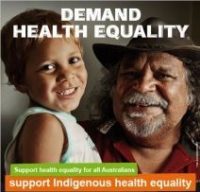Targeting Cancer proudly supports Close the Gap campaign


Most Australians enjoy one of the highest life expectancies of any country in the world — but this is not true for Aboriginal and Torres Strait Islander people.
Aboriginal and Torres Strait Islander people can expect to live 10–17 years less than other Australians and experience higher rates of preventable illness such as heart disease, kidney disease and diabetes.
There are higher rates of cancer in the Indigenous community and higher rates of death from cancer compared to non-indigenous Australians.
Is this the Australia you want? With your help we aim to close this health gap and achieve Aboriginal and Torres Strait Islander health equality within a generation.
Take action now and support Indigenous health equality
For more information on the campaign click here
Facts about Indigenous health, cancer and the importance of radiation oncology for Indigenous communities
Babies born to Aboriginal mothers die at more than twice the rate of other Australian babies.
Aboriginal and Torres Strait Islander people experience higher rates of preventable illness.
Cancer is responsible for 18% of total deaths among Indigenous Australians. Although cancer death rates are similar for Indigenous and non-Indigenous Australians aged less than 35 years or 65 years and over, Indigenous Australians in the middle age groups have higher mortality rates than non-Indigenous Australians.
Lower participation rate in cancer screening programs among Indigenous Australians is a factor that leads to late diagnosis of cancer. For many patients, this is exacerbated by the limited access to care or patient preferences regarding treatments (especially in rural areas).
Radiation therapy is a cost effective efficient treatment mode for cancer and a valuable option in palliative care, to relieve pain and discomfort. The most commonly occurring cancers in Indigenous population (cancer of lip/mouth/pharynx, lung, oesophagus, pancreas, cervix and uterus) respond positively to radiation therapy.
Only 1% of people working in the health workforce are Indigenous, and even fewer work with health information or statistics.



